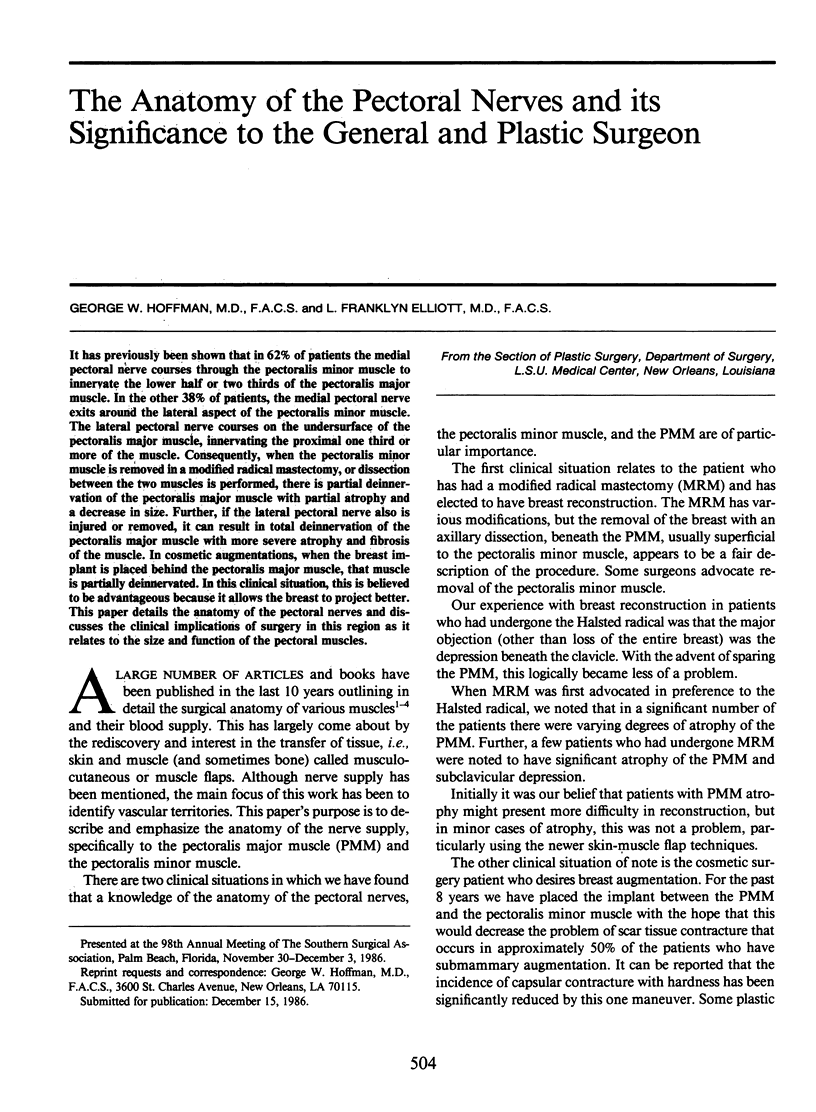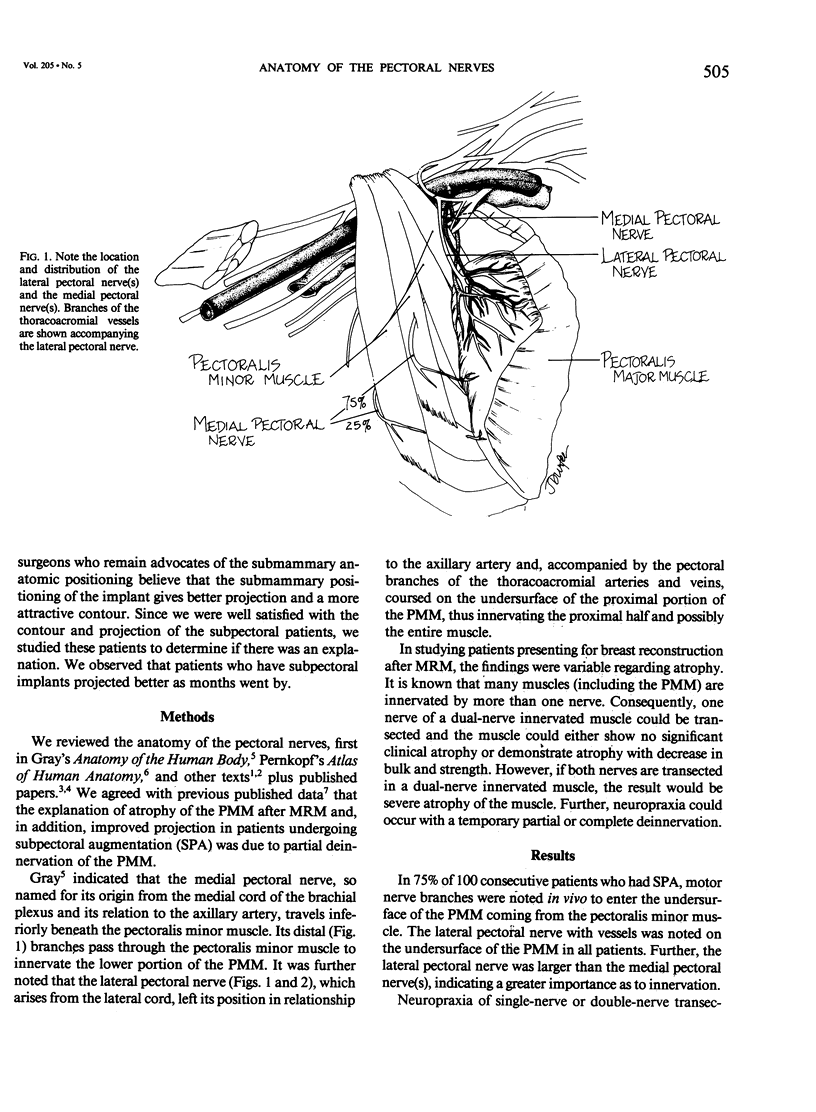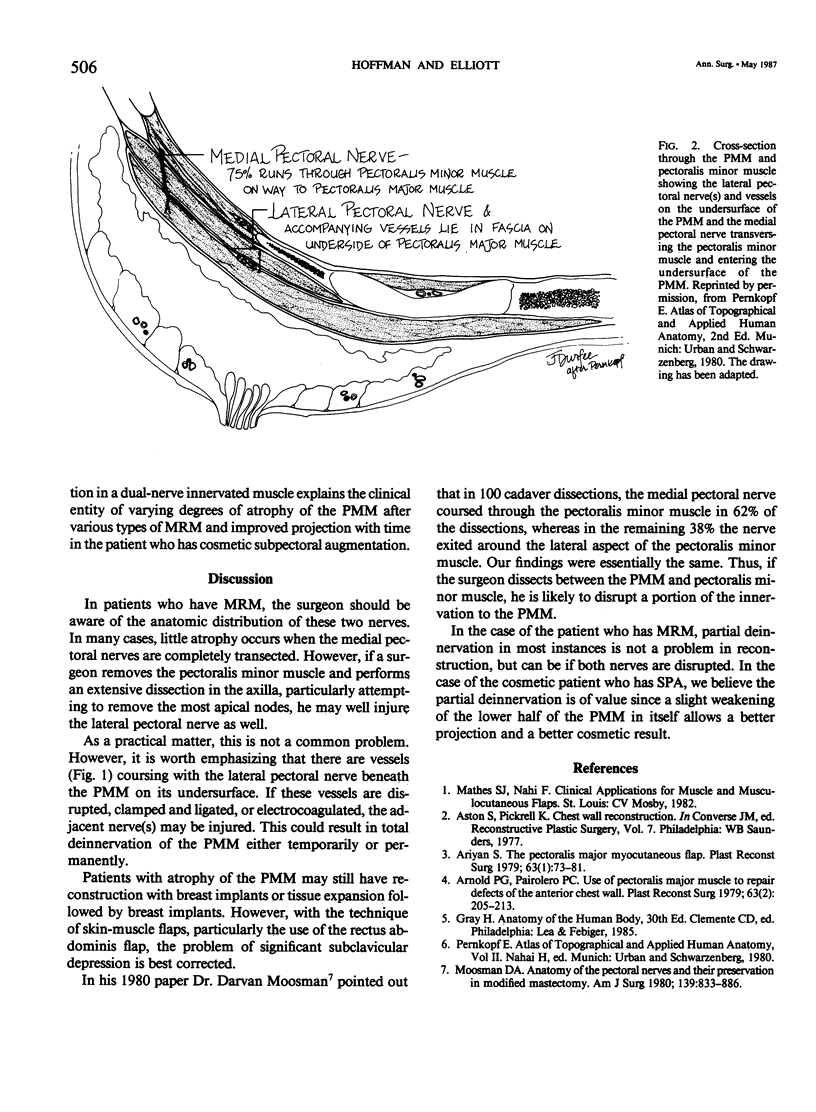Abstract
It has previously been shown that in 62% of patients the medial pectoral nerve courses through the pectoralis minor muscle to innervate the lower half or two thirds of the pectoralis major muscle. In the other 38% of patients, the medial pectoral nerve exits around the lateral aspect of the pectoralis minor muscle. The lateral pectoral nerve courses on the undersurface of the pectoralis major muscle, innervating the proximal one third or more of the muscle. Consequently, when the pectoralis minor muscle is removed in a modified radical mastectomy, or dissection between the two muscles is performed, there is partial deinnervation of the pectoralis major muscle with partial atrophy and a decrease in size. Further, if the lateral pectoral nerve also is injured or removed, it can result in total deinnervation of the pectoralis major muscle with more severe atrophy and fibrosis of the muscle. In cosmetic augmentations, when the breast implant is placed behind the pectoralis major muscle, that muscle is partially deinnervated. In this clinical situation, this is believed to be advantageous because it allows the breast to project better. This paper details the anatomy of the pectoral nerves and discusses the clinical implications of surgery in this region as it relates to the size and function of the pectoral muscles.
Full text
PDF


Selected References
These references are in PubMed. This may not be the complete list of references from this article.
- Ariyan S. The pectoralis major myocutaneous flap. A versatile flap for reconstruction in the head and neck. Plast Reconstr Surg. 1979 Jan;63(1):73–81. doi: 10.1097/00006534-197901000-00012. [DOI] [PubMed] [Google Scholar]
- Arnold P. G., Pairolero P. C. Use of pectoralis major muscle flaps to repair defects of anterior chest wall. Plast Reconstr Surg. 1979 Feb;63(2):205–213. doi: 10.1097/00006534-197902000-00008. [DOI] [PubMed] [Google Scholar]
- Moosman D. A. Anatomy of the pectoral nerves and their preservation in modified mastectomy. Am J Surg. 1980 Jun;139(6):883–886. doi: 10.1016/0002-9610(80)90403-1. [DOI] [PubMed] [Google Scholar]


